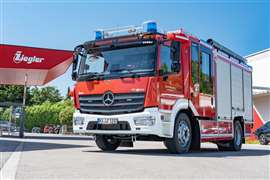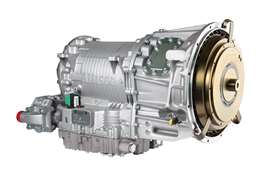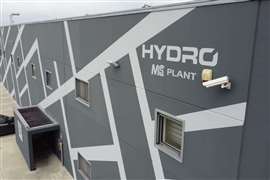Read this article in Français Deutsch Italiano Português Español
Firefighters get schooled on automatic transmissions
26 March 2024
Allison 3000 Series fully automatic transmissions chosen for new training vehicles
The state firefighting school Baden-Württemberg in Bruchsal acts as a training and continuing education facility for managers of industrial and public fire departments, both volunteer and professional. The aim is to optimally prepare fire services to deal with complex tasks and emergencies.
 The school acquired six Ziegler Atego fire engines mounted on the Mercedes Atego 1527F 4 x 2 chassis. (Photo: Albert Ziegler GmbH HLF10)
The school acquired six Ziegler Atego fire engines mounted on the Mercedes Atego 1527F 4 x 2 chassis. (Photo: Albert Ziegler GmbH HLF10)
To achieve this, the Landesfeuerwehrschule Baden-Württemberg (LFS) trains around 6,500 participants every year. The extensive training grounds of the LFS in Bruchsal (approximately 100 km from Stuttgart) enable realistic training in a real-life environment. Among the facilities are towers, houses, a 300-meter rail track with wagons, a storage building with hay and straw, a practice pond, an excavation pit and more.
Currently, the LFS training fleet has around 40 vehicles, ranging from crew transport vehicles to advanced auxiliary firefighting vehicles from various manufacturers. In order to improve the quality of training for the team leader courses, the procurement of six identical firefighting vehicles become necessary. Previously, different vehicle models were in use, which meant that the instructor had to provide instruction on six vehicles from different manufacturers in one course.
Beyond standard
Following a Europe-wide tender, the school acquired six Ziegler Atego fire engines mounted on the Mercedes Atego 1527F 4 x 2 chassis. Rather than the standard automated manual transmission (AMT), the school opted to equip the vehicles with the Allison 3000 Series fully automatic transmission with Power Take-Off and Retarder (PR).
“The trend is moving away from manual transmissions, and we at the Landesfeuerwehrschule Baden-Württemberg also recommend automatic transmissions for firefighting vehicles,” said Kersten Wachter, who is responsible for technology and vehicle procurement at the facility.
 The Allison 3000 PR transmission has been specifically designed for the challenges of firefighting applications. (Photo: Allison Transmission))
The Allison 3000 PR transmission has been specifically designed for the challenges of firefighting applications. (Photo: Allison Transmission))
Vehicles are used for around 800 training sessions per year. The constant use puts the vehicles and the driveline under continuous stress and all components face permanent wear and tear. As a result of the high demands placed on them, the vehicles are taken out of service approximately every 10 years.
“We need extremely robust vehicles for our purposes,” Wachter said. “When the participants are on site, the vehicles have to be ready for action. We can’t afford any downtime, as this would disrupt our entire training schedule.”
Designed with firefighting in mind
Rated up to a maximum gross input power of 336 kW (450 hp) and 1,695-Nm maximum gross input torque, the Allison 3000 PR transmission has been specifically designed for firefighting applications. The intelligent transmission logic supports the driver both on and off the road, Allison said, and the patented torque converter multiplies the engine torque during startup and acceleration, providing up to 35 % higher acceleration. Gear changes occur without any traction loss, resulting in optimized power transfer to the drive wheels and maximum engine and transmission efficiency, the company added.
“Allison transmissions also differ from other technologies due to their special firefighting performance calibration. A fully automatic transmission only really takes the strain off the driver on emergency drives if the shift strategy is precisely calibrated for these vehicles and the transmission virtually works together with the driver,” said Peter Brecht, OEM account manager at Allison Transmission.
The transmissions are equipped with two engine speed-dependent PTOs for simultaneous operation of various auxiliary units. “The Pump & Roll function allows the water pump to be operated via the Power Take-Off even when the vehicle is moving,” Brecht pointed out. “An automated manual transmission cannot offer that.”
POWER SOURCING GUIDE
The trusted reference and buyer’s guide for 83 years
The original “desktop search engine,” guiding nearly 10,000 users in more than 90 countries it is the primary reference for specifications and details on all the components that go into engine systems.
Visit Now
STAY CONNECTED




Receive the information you need when you need it through our world-leading magazines, newsletters and daily briefings.
CONNECT WITH THE TEAM













